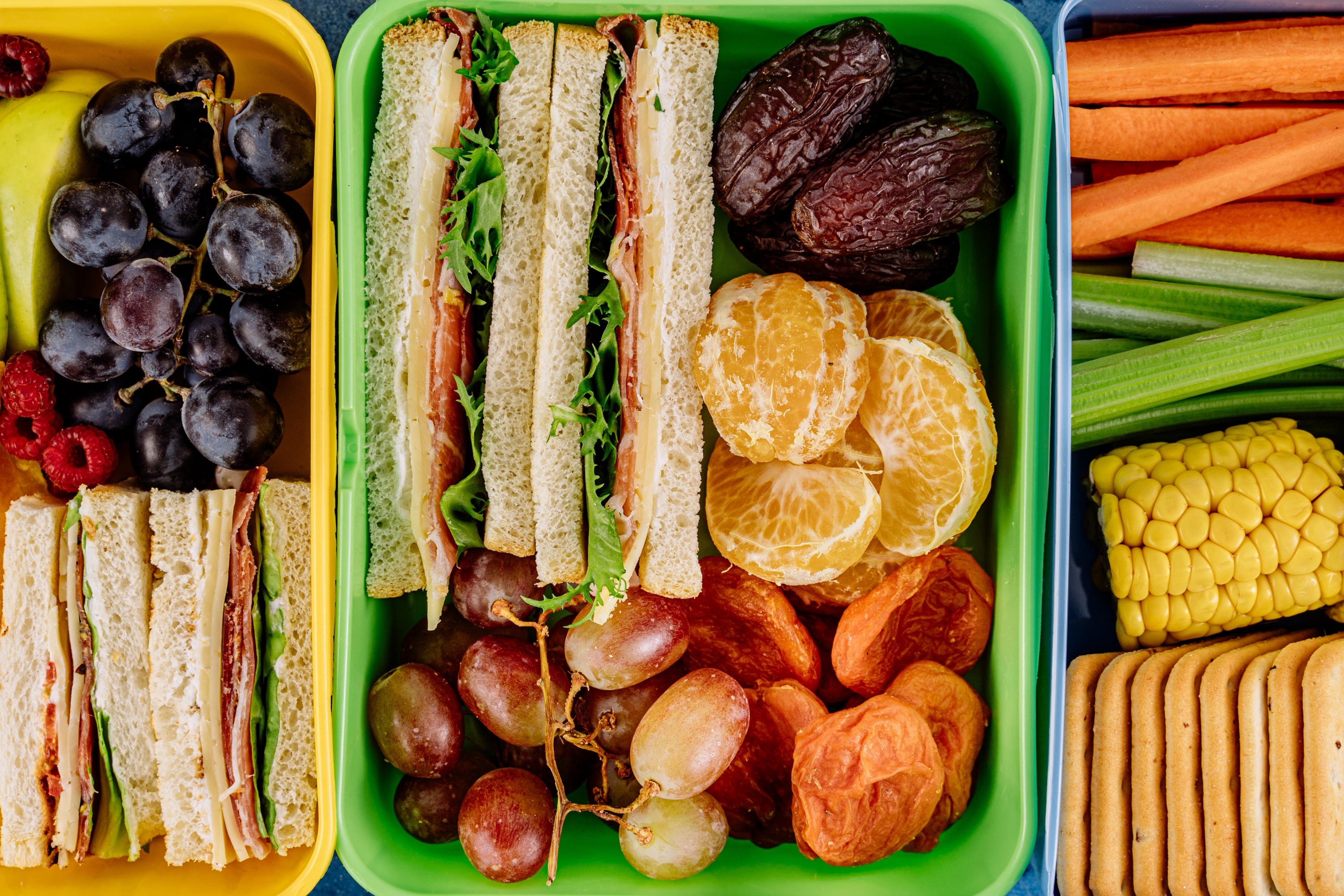
August marks the beginning of another school year. While the kids’ eyes are set on new backpacks, school supplies, and lunch boxes, parents are likely trying to figure out what to put in these new lunch boxes. Proper nutrition is vital at a school age to help kids grow and learn, as well as to support their immune systems (and we all know how important that is when you have a bunch of kids in one room). Lunches look different depending on cultures, preferences, and resources available. One of the biggest things to keep in mind is the energy needs of a growing child.
Energy requirements differ based on age, gender, and activity level. Kids have a higher basal metabolic rate than adults do as they are still growing. Basal metabolic rate is the energy the body uses just to function. It is often used interchangeably with the term resting metabolic rate, which is the energy our body uses at rest. In plainer terms, if we were to lie on the couch all day without moving, this is the energy that our body would require to exist. Exercising increases our need for energy. This chart produced by the American Academy of Pediatrics is a great quick reference for roughly how many calories one might need daily. Moderately active, meaning about 30-60min of exercise per day (think going for a walk), and active being 60+ minutes (attending a Fit Kids Crossfit class at PUSH511 or playing basketball with friends). Of note, there are currently no dietary guidelines for transgender individuals. There are a multitude of factors that may impact caloric needs such as whether the individual is taking hormones or has had a gender-affirming surgery. I would encourage a visit to a Registered Dietitian and pediatrician who has experience caring for LGBTQ+ patients for more information.
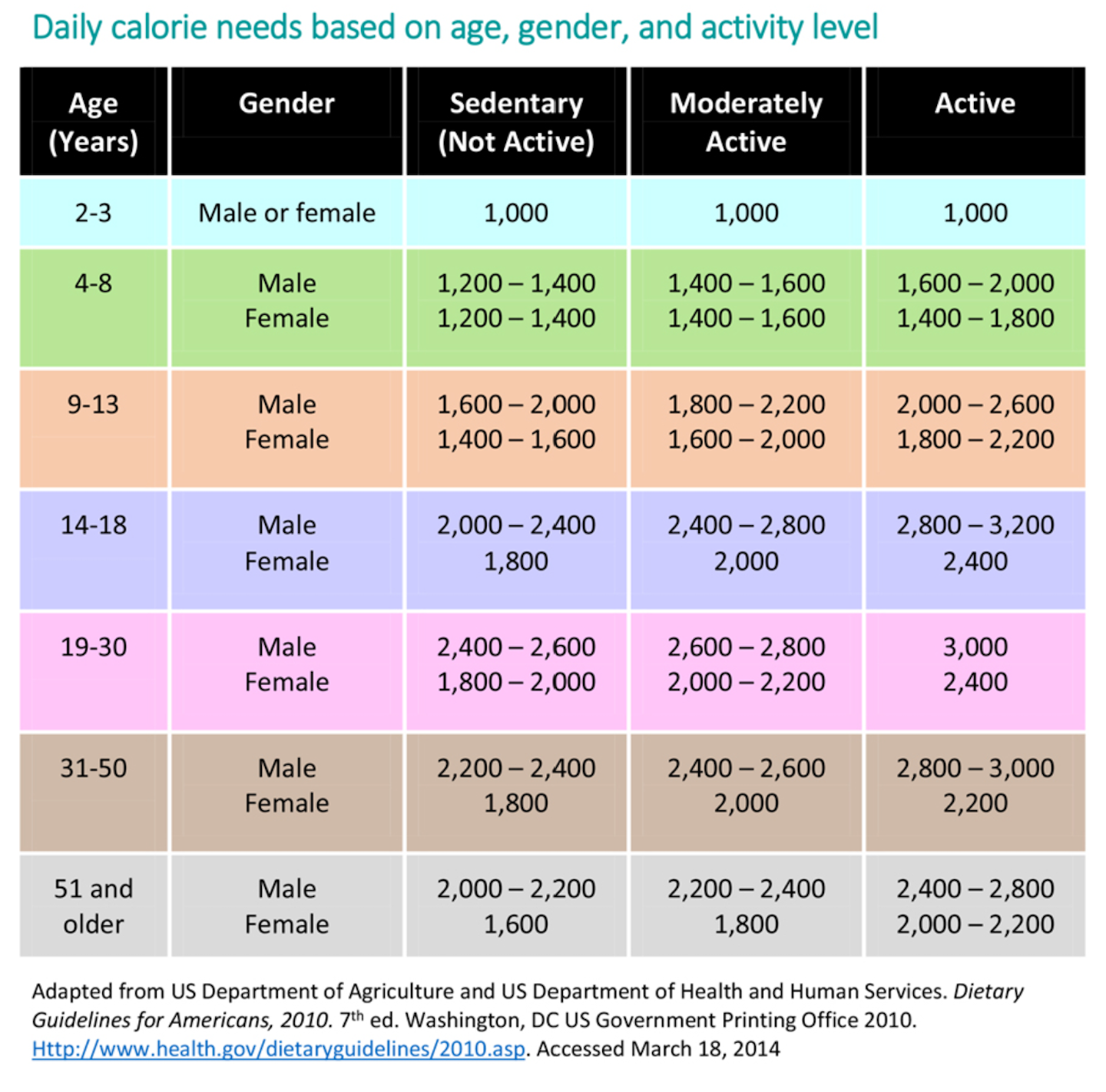
If you are like me, you may be wondering what the calories from the basal metabolic rate are used for. If not, feel free to skip to the next paragraph. The majority of energy, at ~27%, goes to your liver and spleen. These organs do a lot for your body, including but not limited to, making hormones, getting rid of toxins, and filtering out old or damaged red blood cells. The brain comes in next requiring ~20% of your energy, with most of that energy going towards things you don’t even realize your brain is doing. These include telling your body when to breathe, being able to feel the wind on your face, or knowing where your limbs are located in the space around you (this is called proprioception and it is how we can close our eyes and still be able to touch our nose with our finger, etc.). Sadly we cannot think extra hard as a weight loss plan, researchers have studied this and the extra calories burned equates to roughly five extra calories per hour. So don’t drop your PUSH511 membership in exchange for a Sudoku book. Skeletal muscle follows close behind the brain, followed by the kidney, the heart, and then everything else (GI tract, bladder, etc.).
While step one is definitely knowing how many calories to provide your child, step two involves the more frustrating question of what to feed your child. The tables below are taken from the 2020-2025 Dietary Guidelines. These guidelines are updated every five years. They also analyzed the current composition of adolescent diets and found that vegetables and whole grain consumption were consistently lacking across all age groups. A recent study found that ~50% of kids under the age of 18 do not even eat one serving of a vegetable every day. One way shown to encourage kids to eat more vegetables is by modeling- aka eat your vegetables and there’s a higher chance they will too. Other strategies include providing more frequent vegetable-related snacks (carrots and ranch, cucumbers, bell peppers, etc. served with hummus), more vegetables at meal times, allowing kids to pick what they want to eat, and not forcing your child to eat a certain vegetable.
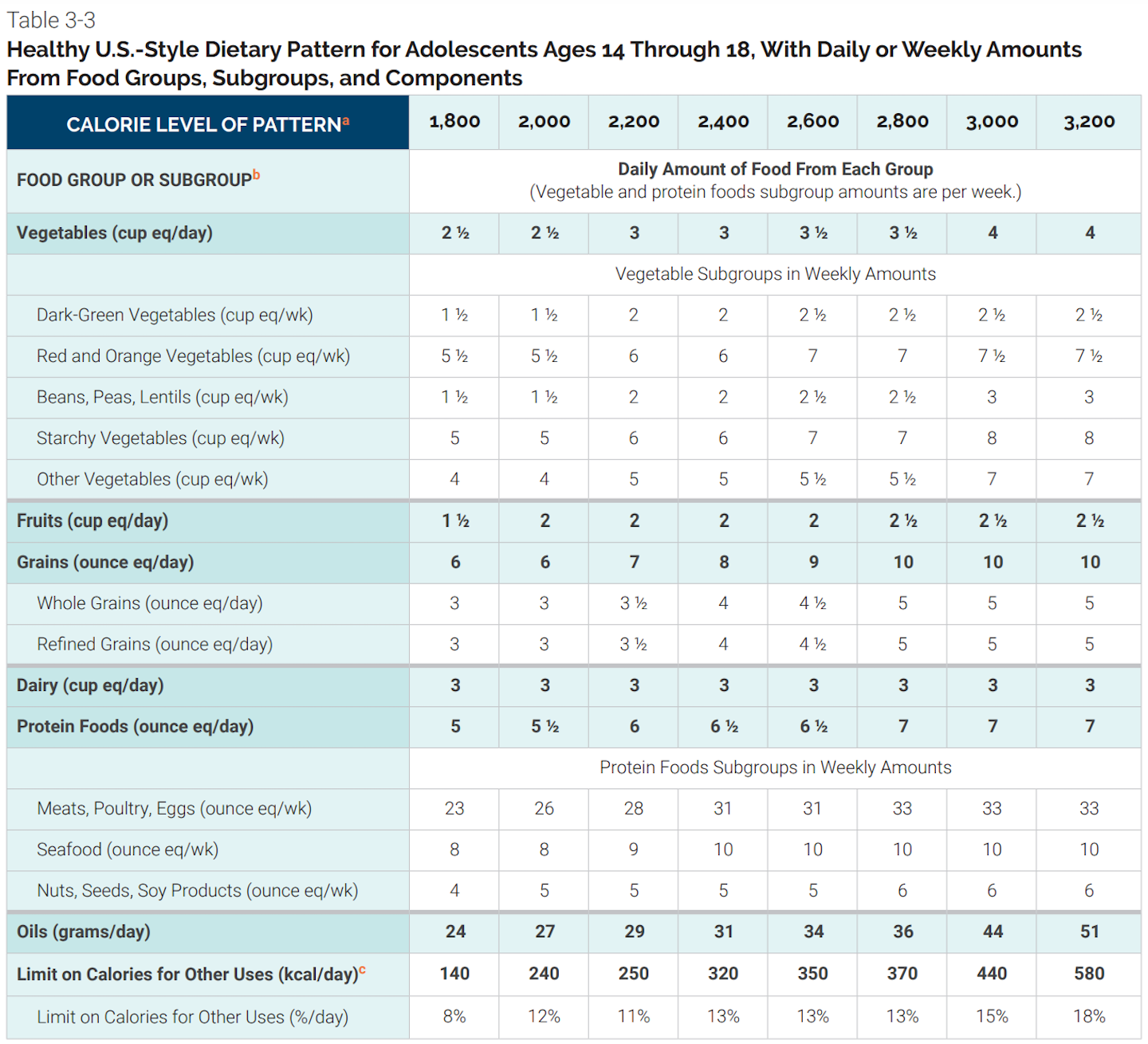
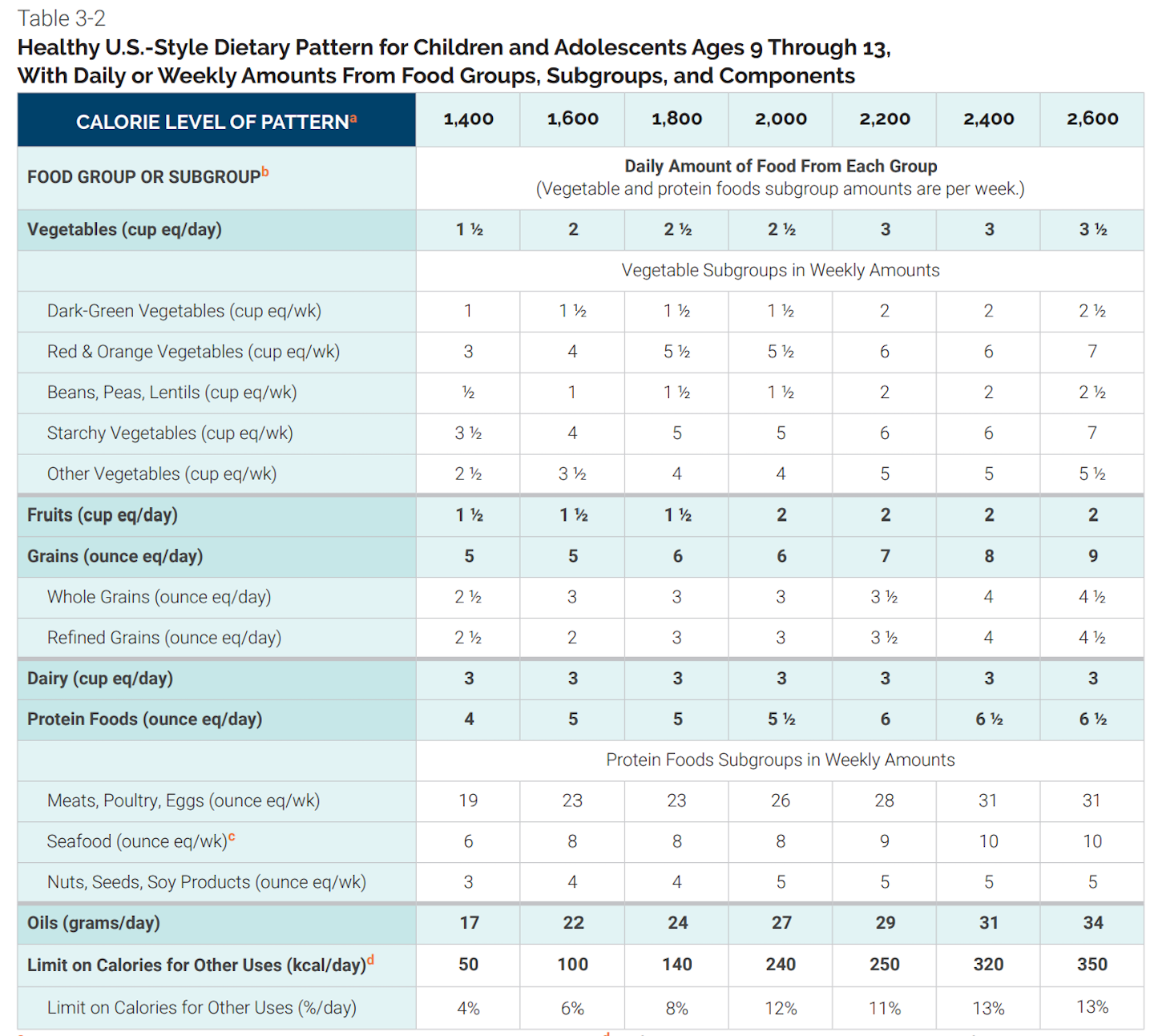
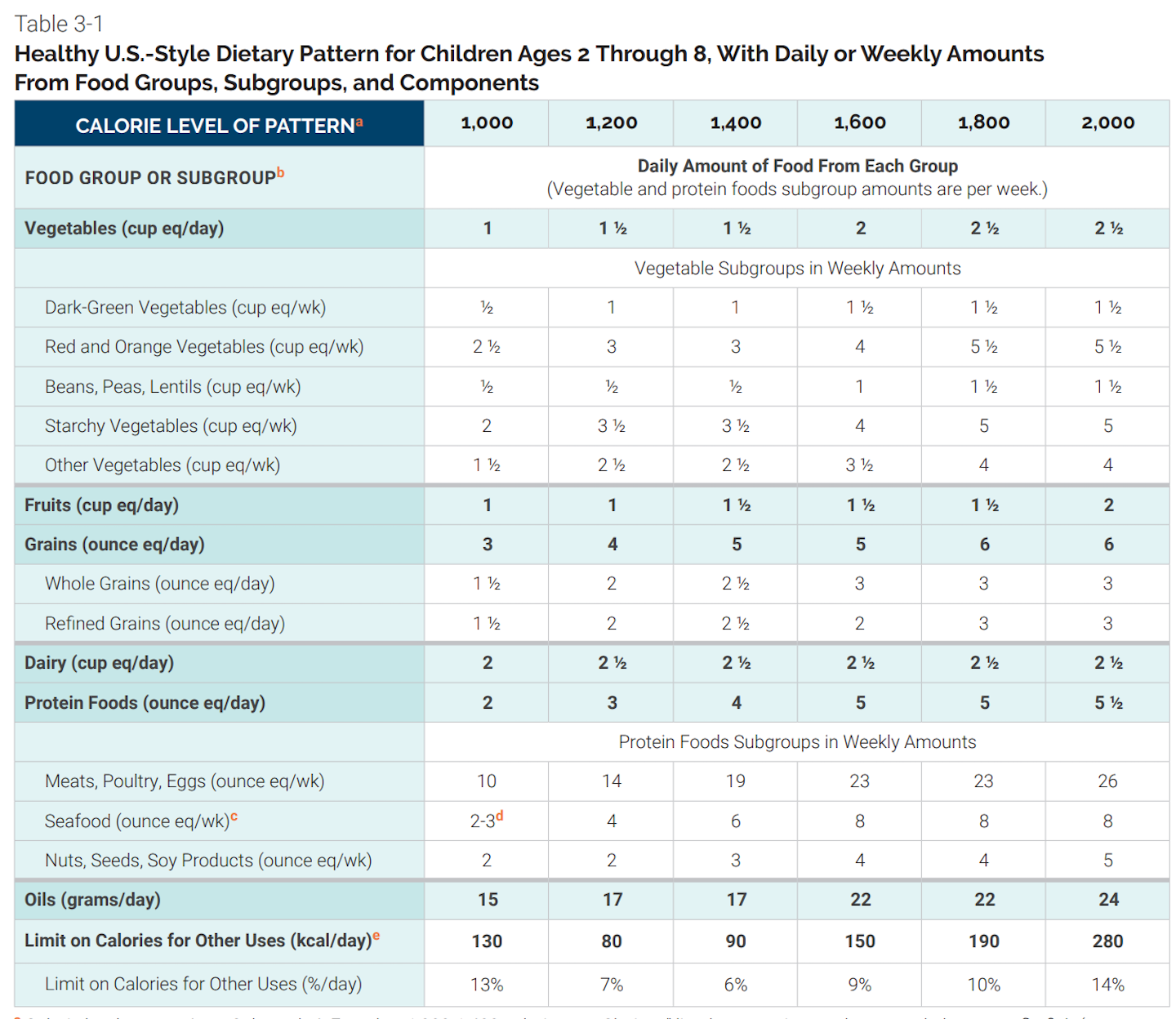
The above charts do a great job of laying out a template based on age. Lunch should make up about ~35-40% of daily calories, depending on if a snack is built in. A simple way to plan is to use the Plate Method. On a standard dinner plate, ¼ of the plate should be taken up by non-starchy vegetables, ¼ for fruit, ¼ goes to grains (preferably whole grains) or starchy vegetables, ¼ for protein. Alongside the plate, you have a side of dairy. It’s important to first know which foods fall into which categories:
- Non-starchy vegetables: Carrots, bell peppers, cucumbers, grape tomato, snow peas, beets, broccoli, squash, zucchini, bok-choy, kale, spinach, lettuce, butternut squash, eggplant, edamame, etc.
- Fruit: Apple, orange, grapes, banana, peach, nectarine, plum, watermelon, cantaloupe, pear, berries, honeydew, etc.
- Grains: Bread, pasta, crackers, oatmeal, pretzels, cereal, rice, grits, etc.
- Whole grain is preferred. In moderation, foods such as snack crackers and tortilla chips can also go here.
- Starchy vegetables: Potatoes, sweet potato, corn, hominy, peas, cassava, plantains, yams, parsnips, pumpkin
- Foods such as french fries and potato chips would fall into this category and should be consumed in moderation
- Proteins: chicken, turkey, beef, pork, salmon, tuna, jerky, nuts, tofu, beans, eggs
- Some foods from other categories, often dairy, may be used as protein sources such as Greek yogurt, cottage cheese, cheese, and milk
- Nut butters are also included here, be mindful of portion sizes as these are often higher in saturated fats
- Dairy: Cottage cheese, cheese cubes, milk, yogurt, Kefir
Using the above lists as a guide, you can now fill in your plate:
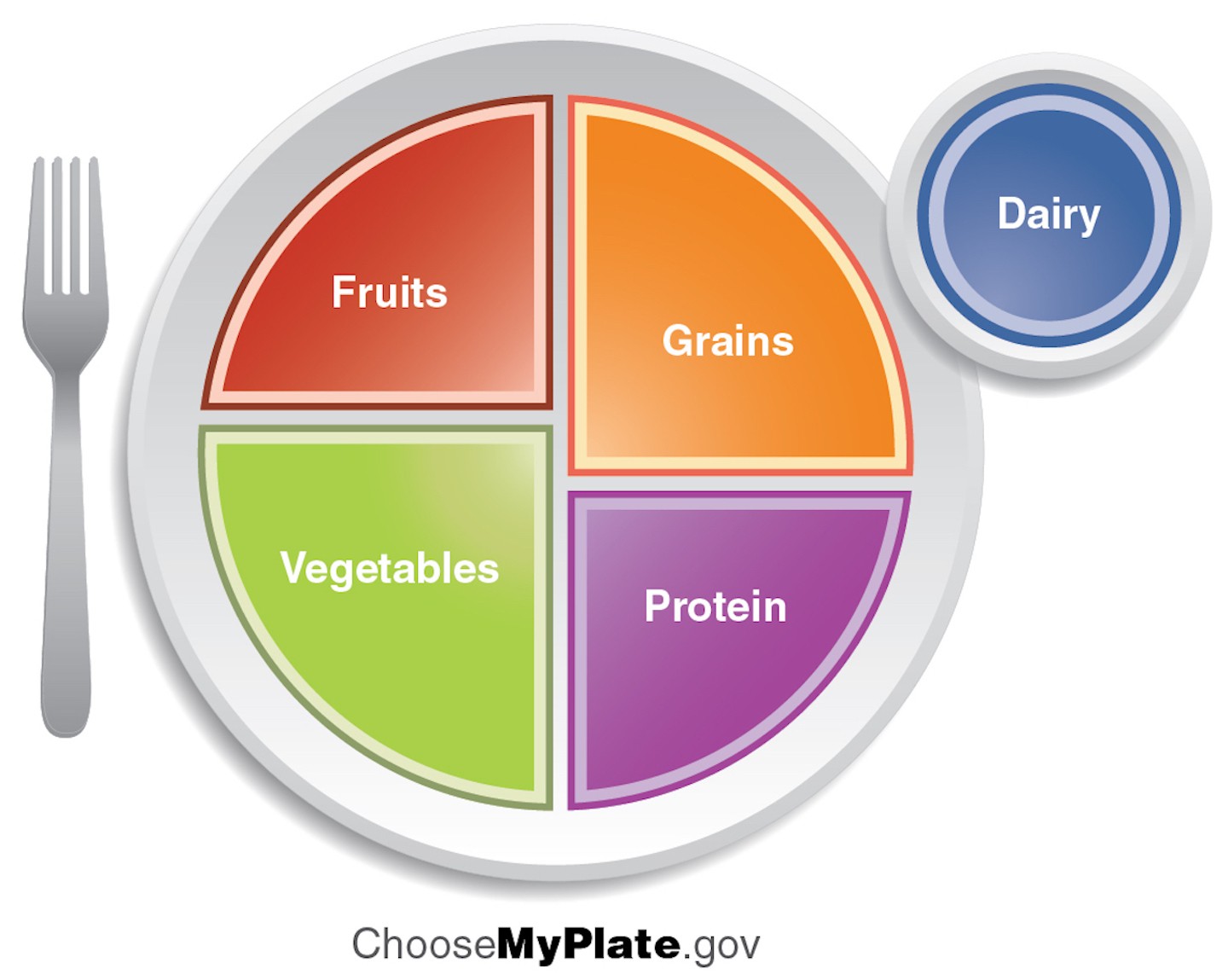
Examples of a balanced plate:
- Quick and easy ideas:
- Peanut butter and jelly on whole wheat bread OR low sodium deli meat sandwich (pile the veggies on!) with a serving of fruit, carrots and ranch, and a portion size of your child’s favorite snack food, it’s ok if it’s chips!
- Peanut butter and pretzels with apple slices, bell pepper slices, and cottage cheese
- Bento box ideas:
- Cucumber slices, cut-up grilled chicken, cheese cubes, crackers, and a banana
- Rotisserie chicken, pita chips, carrot sticks served with guacamole or hummus, with ~15 grapes
- Deconstructed tacos: ground chicken or turkey, lettuce, diced tomato, cheddar cheese, with salsa, and a side of fruit
- Based on leftovers:
- Spaghetti and meatballs with zucchini and squash, fruit, and a pudding cup
- Chicken salad sandwich on whole wheat bread with a side salad and an orange
For more ideas, feel free to watch this news clip from a 2019 episode of Fox News Baltimore of yours truly and my fellow dietitian Stephanie Binder. And if you need help balancing your nutrition with your family’s, check out nutrition coaching with PUSH511!
About the Author

I am a Licensed Registered Dietitian with experience in critical care, cardiology, weight loss, allergy services, and food service. I graduated from Penn State University with a BS in nutrition and finished my RD training at University of Maryland. I am currently in PA school and am looking forward to combining my love of nutrition with medicine. After moving to Baltimore in 2019, I did a trial class at PUSH511 Fitness as I was looking for accountability and to meet new people. When I walked into the gym for the first time, everyone was congregated on one side cheering on a member who was struggling with ring muscle-ups at the end of the workout. It was such an uplifting moment to witness. I left the gym that day in dire need of ginger ale, but also very excited about this amazing and supportive community I had stumbled upon. I am grateful for this opportunity to give back and share my love of nutrition!
Sources
https://www.ncbi.nlm.nih.gov/pmc/articles/PMC4149824/
https://www.washingtonpost.com/wellness/2023/03/07/kids-not-eating-vegetables/
https://openoregon.pressbooks.pub/bodyphysics/chapter/human-metabolism/
https://www.sciencefocus.com/the-human-body/does-concentrated-thought-burn-calories/


Comments are closed.